Embarking on a DIY home renovation project sparks excitement, however it is important to note that it can also raise a multitude of inquiries. You could be questioning where to commence or fretting about surpassing your budget.
It’s normal to experience these feelings, particularly when you’re navigating the complexities of significant alterations such as a kitchen renovation or the addition of a new bathroom.
One vital detail to remember is: a meticulous plan underpins the success of a renovation. This article will serve as your guide, meticulously navigating through considerations of design, scope, and budget.
With our suite of guidance, you’ll craft sensible decisions that not only augment your home’s value but also ensure you stay within your financial limits. Are you prepared? Let’s delve into the journey!
Key Takeaways
- Plan your DIY home renovation carefully. Know what rooms you want to fix and how much it will cost.
- Set a budget that includes extra money for surprises. Kitchens and bathrooms can be expensive but add value.
- Choose materials that look good and are easy to keep clean. Think about how you use each room.
- Work with skilled contractors and get quotes from several to find the best price.
- Keep track of your project with checklists or apps, and save all your paperwork in one place.
SHOP NOW ZAZZLE - CLICK BELOW
DIY Home Renovation: Design, Scope, and Budget
Renovating your home can be a rewarding experience, especially when you tackle projects yourself, a DIY home renovation. However, achieving success requires careful consideration of design, scope, and budget. Below is a comprehensive guide to help you plan and execute a DIY home renovation.

Design
The design phase focuses on creating a vision for your renovation. Consider the following:
- Incorporate Trends:
-
- Use sustainable materials like recycled wood or eco-friendly tiles for a green remodel.
- Integrate smart home technology for lighting, security, and climate control.
- Add biophilic elements such as plants and natural light to create harmony between indoor spaces and nature.
- Room-Specific Ideas:
-
- Kitchen: Install a backsplash or repaint cabinets for a fresh look.
- Bathroom: Update fixtures, repaint cabinets, or refresh the flooring with stencils.
- Living Room: Create an accent wall or replace outdated furniture with modern pieces.
- Outdoor Spaces: Build a firepit or create an entertaining zone with potted plants and solar lights.
- Personalization:
-
- Choose colors and materials that reflect your style. Neutral tones work well for resale value, while bold accents can add personality.
Scope
Defining the scope ensures clarity and prevents misunderstandings during the renovation process.
- Key Elements:
-
- List tasks to be completed (e.g., painting walls, installing shelves).
- Specify materials (e.g., laminate flooring vs. hardwood).
- Include timelines for each phase of the project.
- Outline payment structures if hiring professionals for certain tasks.
- Room-by-Room Approach:
If tackling the entire house feels overwhelming, prioritize high-impact areas like the kitchen and bathroom first. Gradually work through other spaces as time and budget allow. - DIY vs. Professional Help:
Identify which tasks you can confidently handle yourself (e.g., painting, replacing hardware) versus those requiring professional expertise (e.g., electrical work).
Budget
A well-planned budget is essential to avoid overspending.
- Set Limits:
Spend no more than 10-15% of your home’s value on any single room to ensure proportional returns on investment. - Cost-Saving Tips:
-
- Opt for DIY-friendly projects like repainting walls or installing peel-and-stick tiles.
- Shop smart by purchasing second-hand materials or visiting salvage yards for unique items.
- Repurpose existing furniture through upcycling techniques like painting or reupholstering.
- Allocate Funds Wisely:
Focus on cosmetic updates that make a significant impact without major structural changes. Examples include updating fixtures, refinishing floors, or adding decorative accents. - Prepare for Contingencies:
Reserve 10-20% of your budget for unexpected costs such as material delays or repairs uncovered during renovations.
DIY Home Renovation Ideas
Here are some practical DIY home renovation projects suitable for beginners:
|
Project |
Estimated Cost |
Impact |
|
Repainting walls |
$100-$300 |
Refreshes the look of any room instantly. |
|
Installing kitchen backsplash |
$200-$300 |
Adds style and functionality to your kitchen. |
|
Updating cabinet hardware |
$25-$500 |
Modernizes kitchen or bathroom aesthetics. |
|
Refinishing hardwood floors |
$1-$2 per sq ft |
Enhances durability and appearance. |
|
Building shelves |
$50-$200 |
Increases storage space while adding charm. |
Execution Tips
To ensure smooth progress during your renovation:
- Plan Ahead: Start planning at least six months before beginning major renovations. Include detailed steps in your project plan.
- Gather Tools: Ensure you have essential tools like drills, saws, measuring tape, and safety gear ready before starting any project.
- Follow Tutorials: Utilize online guides for step-by-step instructions on specific tasks such as painting cabinets or installing tiles.
- Communicate Clearly: If working with contractors, maintain regular check-ins to align expectations and address issues promptly.
By carefully considering design elements, defining the scope of work, and adhering to a realistic budget, you can transform your home into a space that reflects both functionality and personal style—all while saving money through DIY efforts. Happy renovating!
How can I integrate smart home technology into my DIT home renovation?
Integrating smart home technology into your renovation can enhance convenience, energy efficiency, security, and entertainment in your living space. Below is a guide to help you incorporate these features effectively.
Planning
- Define Goals: Identify your priorities, such as improving security, optimizing energy use, or enhancing convenience.
- Budget Allocation: Determine how much you’re willing to spend on smart devices and infrastructure. High-end systems can be costly, but affordable options are available.
- Infrastructure Setup:
-
- Ensure proper wiring for devices requiring Ethernet or power connections.
- Invest in a robust Wi-Fi network or mesh system for seamless connectivity.
Key Smart Home Features
Smart Lighting
- Install smart bulbs and switches that adjust brightness, color, and schedules via smartphone or voice commands.
- Use motion sensors for automated lighting in hallways or outdoor areas.
Climate Control
- Add smart thermostats that learn your preferences and optimize energy use, saving 10-15% on heating and cooling bills.
- Consider zoned heating/cooling systems for personalized temperature control in different areas of the house.
Security Systems
- Integrate smart locks, cameras, and alarm systems for remote monitoring and control.
- Use video doorbells to stream live footage and receive alerts about visitors or deliveries.
Voice-Controlled Assistants
- Incorporate devices like Amazon Alexa or Google Assistant to centralize control of smart features through voice commands.
Smart Appliances
- Upgrade kitchen appliances (e.g., refrigerators, ovens) that offer remote monitoring and advanced features like grocery reminders.
- Add smart plugs to make non-smart devices controllable via apps.
Entertainment Systems
- Install smart TVs and speakers for voice-controlled streaming and integrated home theater experiences.
Energy Management
- Use smart meters to monitor energy consumption and identify savings opportunities.
- Add smart outlets to track the energy usage of plugged-in devices.
Design Considerations
- Aesthetic Integration: Choose devices that blend seamlessly with your home’s design or can be discreetly installed.
- Future-Proof Wiring: Ensure your renovation includes updated wiring to support current and future smart devices.
- Centralized Control: Use a home automation hub (e.g., SmartThings, Apple HomeKit) to manage all devices from a single platform.
Benefits of Smart Home Integration
- Energy Efficiency: Automated systems like smart thermostats and lighting reduce utility bills while conserving resources.
- Enhanced Security: Real-time alerts and remote access provide peace of mind whether you’re at home or away.
- Convenience: Manage daily tasks with voice commands or smartphone apps for a seamless living experience.
- Increased Property Value: Homes with integrated smart technology are more appealing to buyers, boosting resale value.
By carefully planning your DIY home renovation with these considerations in mind, you can create a modern, connected home that enhances comfort, efficiency, and security while preparing for future advancements in technology.
What are the most popular smart home devices for beginners?
For beginners, starting with simple and versatile smart home devices is the best way to ease into home automation. Here are some of the most popular smart home devices for those new to the concept:

- Smart Plugs
- Why They’re Great for Beginners:
-
- Affordable and easy to install.
- Turn any plug-in device (e.g., lamps, coffee makers) into a smart device.
- Control devices remotely or set schedules using apps or voice commands.
- Popular Options:
-
- TP-Link Kasa Smart Wi-Fi Plug: Compatible with Alexa and Google Assistant, it offers energy monitoring and scheduling features.
- Smart Speakers
- Why They’re Great for Beginners:
-
- Act as a hub for controlling other smart devices via voice commands.
- Double as entertainment systems for music, podcasts, and more.
- Popular Options:
-
- Amazon Echo (4th Gen): Works seamlessly with Alexa.
- Google Nest Audio: Ideal for Google Home ecosystems.

- Smart Lights
- Why They’re Great for Beginners:
-
- Easy to install—just replace your existing bulbs.
- Control brightness, colors, and schedules via apps or voice assistants.
- Popular Options:
-
- Philips Hue Bulbs: Offer a wide range of colors and compatibility with most platforms.
- Smart Thermostats
- Why They’re Great for Beginners:
-
- Help save energy by learning your preferences and optimizing heating/cooling schedules.
- Simple installation for most HVAC systems.
- Popular Options:
-
- Amazon Smart Thermostat: Affordable and works well with Alexa.
- Google Nest Thermostat: Sleek design and intuitive controls for Google users.
- Smart Security Devices
- Why They’re Great for Beginners:
-
- Enhance home safety with minimal setup.
- Provide remote monitoring via smartphone apps.
- Popular Options:
-
- Video Doorbells (e.g., Blink or Ring): Allow you to see and communicate with visitors remotely.
- Indoor Security Cameras (e.g., Eufy S220): Affordable and feature-rich.
- Robot Vacuums
- Why They’re Great for Beginners:
-
- Automate cleaning tasks with minimal effort.
- Some models include app control and scheduling features.
- Popular Options:
-
- Budget-friendly options like Eufy RoboVac are great starters.

- Smart Displays
- Why They’re Great for Beginners:
-
- Combine the functionality of a smart speaker with a touchscreen interface.
- Use them to control devices, watch videos, or monitor security cameras.
- Popular Options:
-
- Amazon Echo Show: Works well in Alexa-based ecosystems.
- Google Nest Hub Max: Ideal for Google Home setups.
Beginner-Friendly Tips
- Start small with one or two devices, such as a smart plug or speaker, before expanding your system.
- Choose devices compatible with your preferred ecosystem (e.g., Alexa, Google Assistant, Apple HomeKit).
- Opt for products that are easy to install and require minimal technical expertise.
These beginner-friendly devices are affordable, easy to use, and provide a solid foundation for building your smart home ecosystem over time.
Determining the scope of your DIY home renovation

Figuring out your renovation scope is like making a map for your project. You need to pick which rooms or areas you want to fix up first and decide how much change they really need.
This step stops you from trying to do too much at once and helps keep your spending in check.
Identifying Key Areas for Renovation
Start with checking your home’s needs. Look at rooms that must be fixed first. Kitchens and bathrooms often need work because they are used a lot. These projects can cost $100 to $200 per square foot.
This means big changes, like adding space or redoing these rooms, will take more money.
Think about what you want from the renovation too. Maybe you wish for more light in the living room or more space in the kitchen for cooking big meals. Your goals help decide where to begin.
Use step-by-step checklists for renovating homes to stay organized. These tools show what tasks come first and how to move forward without forgetting anything important. Planning this way saves time and keeps you on budget, even when surprises happen during renovation.
Prioritizing Projects Based on Need and Budget
It is important to outline which DIY home renovation projects need attention first. This helps keep your renovation on track and within budget.
Identify Essential Repairs
Look for urgent issues like water damage or electrical work. Fixing these problems should come first. They can cause bigger issues if not addressed quickly.
Assess Your Living Space
Consider which areas affect daily life the most. Focus on places you spend time in, like the kitchen and bathrooms. A bathroom remodel might add more comfort and value than just a fresh coat of paint.
Determine Project Costs
Understand how much each project will cost. Major upgrades, such as a living room addition, can run between $100 to $200 per square foot. Knowing costs helps with smart budgeting.
Set Clear Renovation Goals
Define what you want from each project. Do you want better resale value? Or do you want to improve your living experience? This clarity guides decisions on what gets done first.
Prioritize Based on Budget
List projects by their importance and budget impact. Some projects yield high returns like kitchen remodels, while others may be less critical now but important later—like adding outdoor space.
Allocate Funds Wisely
Create a contingency fund to cover unexpected expenses during renovation work. It’s smart to set aside 10-15% of your budget for surprises that pop up along the way.
Plan for Future Projects
Think ahead about other improvements you’d like to make down the road, such as updating bedrooms or landscaping. This helps with overall planning and ensures funds are available when needed.
Engage Professionals When Necessary
Certain tasks may require contractors, especially for electrical work or structural changes—trust professionals who know how to execute these jobs safely and efficiently.
Moving forward, it’s vital to set a realistic budget that reflects all needs and priorities for your DIY home renovation journey.
Setting a Realistic Budget
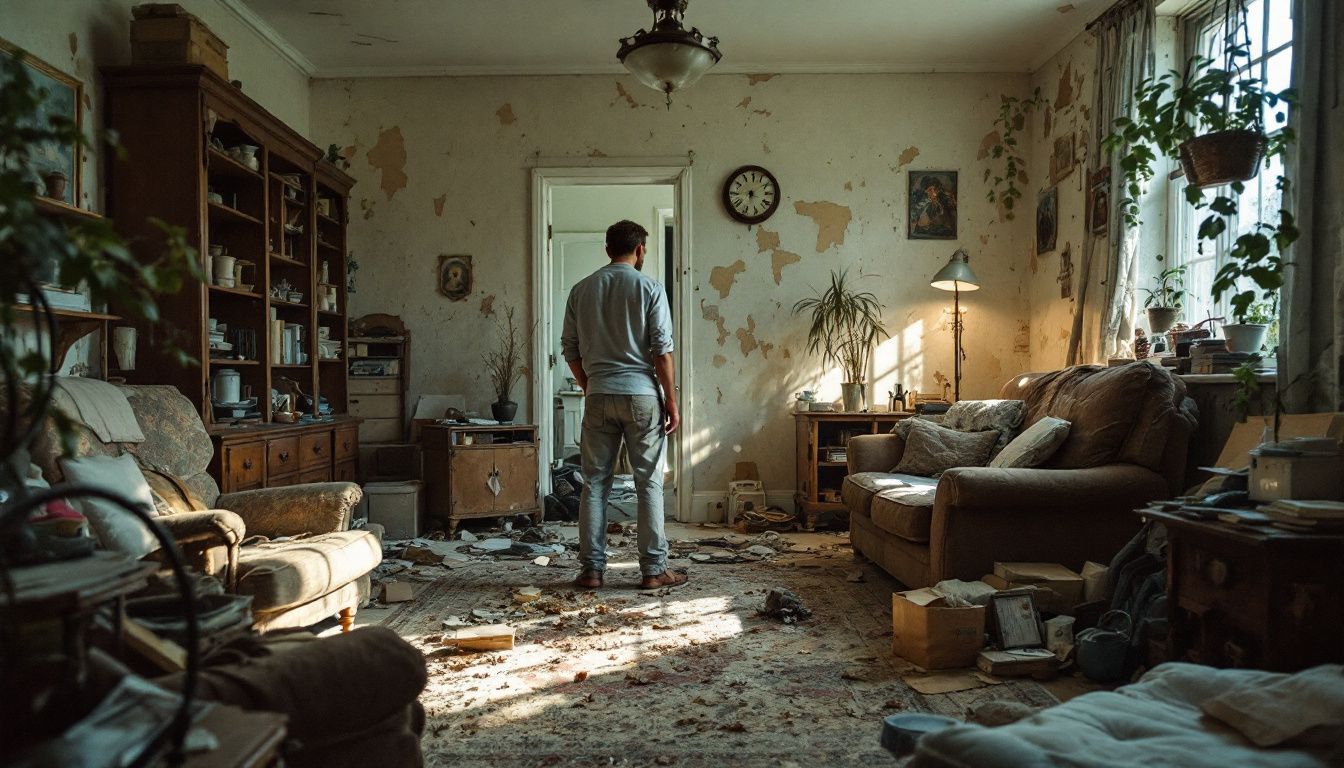
Setting a budget for your DIY home renovation is key. Know how much each room costs. Set aside extra cash for surprises, like unexpected repairs or price jumps. This way, you won’t stress later….
https://www.youtube.com/watch?v=weTsUYj0FXI
Understanding Costs by Room Type
Understanding the costs associated with different types of rooms in your home is key to planning a successful DIY home renovation. Different spaces will require different budgets, depending on size, the extent of work needed, and the materials used. Here’s a clear breakdown to guide you:
| Room Type | Average Cost Range | Notes |
|---|---|---|
| Kitchen | $100 – $250 per square foot | Costs can increase with high-end appliances and custom cabinets. |
| Bathroom | $120 – $275 per square foot | Plumbing and hardware upgrades can raise costs. |
| Living Room | $50 – $150 per square foot | Cost varies with flooring choices and built-ins. |
| Bedroom | $75 – $150 per square foot | Costs depend on closet solutions and window treatments. |
| Outdoor | Starts at a few thousand dollars | Landscape and exterior work can increase overall expenses. |
This table serves as a general guide. Planning for unexpected expenses is a smart move. Kitchens and bathrooms often are the most costly due to plumbing and appliances. Living rooms and bedrooms can be less expensive, but the price can increase with high-end finishes. Outdoor spaces vary widely based on what you’re doing. Always measure your rooms to get a good estimate. Use this information to plan your budget effectively.
Allocating Funds for Unexpected Expenses
DIY home renovations can take surprising turns. Even with a solid plan, unexpected expenses often pop up. Setting aside money for these surprises is wise. Aim to save about 10% of your total budget for such costs.
Costs can add up quickly during a DIY home renovation project. For example, major upgrades like bathroom remodels or living room additions may range from $100 to $200 per square foot. Outdoor projects can start at several thousand dollars, too! It’s essential to cover planned work but also to prepare for the unplanned.
A cash-out refinance or home equity loan might help fund these extra costs. VA loans can offer lower rates if you’re eligible. Always consider how much risk you’re taking by engaging in renovations without enough funds set aside for unexpected issues.
Good planning today helps keep your stress low tomorrow!
Design Considerations in DIY Home Renovation
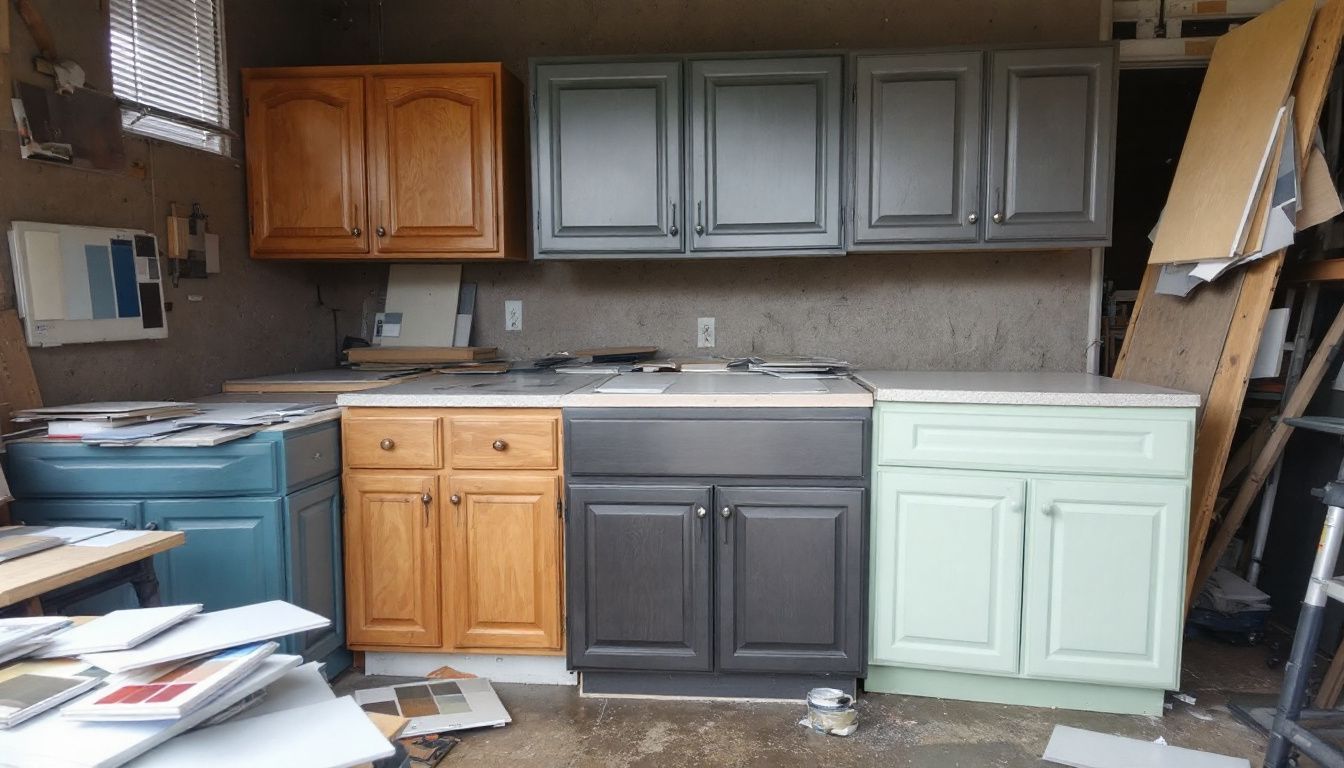
Design is key in DIY home renovation. You want your space to look good and work well too. Think about how you will use each room. Choose materials that fit your style and budget. Whether it’s a new kitchen or a cozy living room, every choice matters….
Balancing Aesthetics and Functionality
A home renovation should blend style with usefulness. Beautiful designs attract the eye, but they must also serve a purpose. Functional spaces make life easier. For example, in kitchens and bathrooms, it’s essential to choose materials that are both attractive and easy to clean.
Consider how you will use each room. A living room needs comfy seating for family gatherings. Bedrooms should be cozy yet practical for rest and storage. While planning your budget, keep in mind that good choices now can add value later.
Balancing looks with function creates a space you’ll enjoy every day.
Choosing Materials and Finishings
Choosing the right materials and finishings is key to a successful home renovation. These choices affect both style and function.
- Focus on Durability
Some materials last longer than others. For example, hardwood floors can withstand heavy use and look great for years.
- Consider Your Budget
Every room has different costs. Major upgrades like kitchen counters or bathroom tiles often range from $100 to $200 per square foot. Set limits based on what you can afford.
- Think About Functionality
Choose materials that work for your lifestyle. If you have kids or pets, opt for easy-to-clean surfaces like laminate or tile.
- Choose Aesthetics Wisely
Find a balance between beauty and practicality. Select colors and finishes that match your home’s style while staying functional.
- Explore Various Options
Different materials give various looks. For kitchens, granite or quartz countertops shine bright but also come at higher costs.
- Plan for Outdoor Spaces
Outdoor renovations can be pricey, often starting in the thousands of dollars. Use weather-resistant materials like composite decking to ensure they last longer.
- Seek Sustainable Choices
Eco-friendly options are more popular now. Reclaimed wood or recycled glass tiles help save the planet while looking stunning.
- Use Samples Before Buying
Always test samples at home first! This helps see how they go with your space’s lighting and existing decor.
- Follow Market Trends
Stay updated on trends in building materials to keep your home modern but comfortable, enhancing customer experience in DIY projects.
- Create a Cohesive Look
Ensure all your finishings tie together throughout the house for a harmonious design, making it feel put-together yet personalized.
Making smart choices about materials and finishings contributes greatly to project management in renovation tasks while setting a clear scope within budget constraints.
DIY Home Renovations Ideas: Kitchen, Living, Bedrooms, Bathrooms
Home renovations can transform your space. Focus on key areas like the kitchen, living room, bedrooms, and bathrooms.
- Kitchen Renovations
- Upgrading your kitchen often adds value to your home. Consider new cabinets, countertops, or a fresh backsplash.
- Major upgrades may cost between $100 to $200 per square foot. Keep this in mind while setting a budget.
- Add energy-efficient appliances. They save money on bills and make your kitchen more appealing.
- Living Room Improvements
- The living room is where you relax and entertain. New paint or wallpaper can create a fresh look.
- Replacing old flooring with hardwood or laminate adds warmth and style.
- Open up the space with better furniture layout or by removing non-structural walls.
- Bedroom Enhancements
- Bedrooms should feel comfortable and inviting. Invest in quality bedding and consider a new color scheme.
- Built-in storage solutions can save space and reduce clutter.
- Adding mirrors can create an illusion of more space, making the room feel larger.
- Bathroom Updates
- Bathrooms are essential for daily life. Simple upgrades like new faucets or fixtures can make a big difference.
- A full remodel might cost thousands but can enhance both style and function.
- Consider adding smart features like heated floors or water-saving toilets for added comfort.
These ideas cater to different budgets and preferences, helping you decide what works best for your home renovation goals. Next comes planning and execution…
Planning and Execution
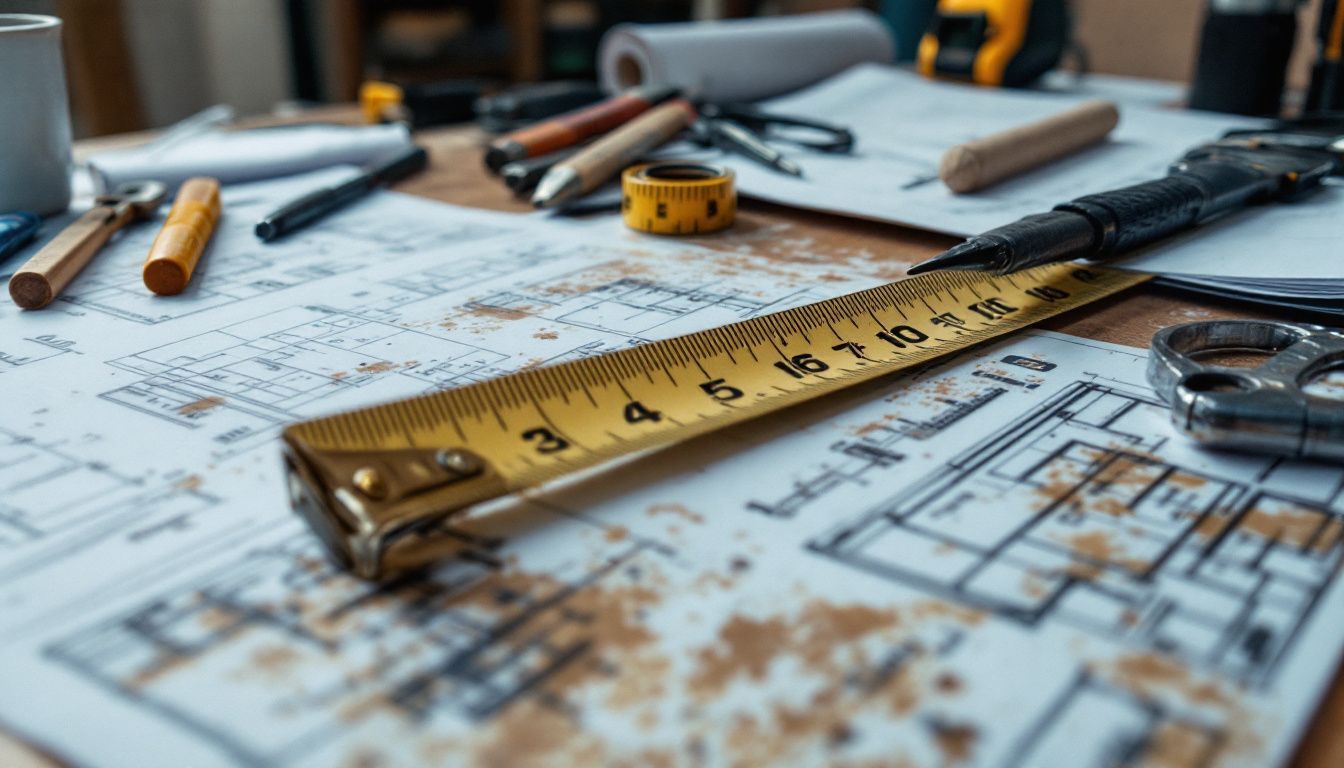
Planning your home renovation takes careful thought. Set a timeline to keep the project on track. Make sure to coordinate with builders and suppliers for smooth progress… A clear plan can help avoid problems down the line.
Creating a Detailed Project Timeline
Creating a detailed project timeline is essential for a successful DIY home renovation. A clear plan helps keep everything on track and within your budget. Here are the key steps to follow:
- List All Tasks: Write down all the tasks you need to complete. This includes everything from planning design to final touches.
- Set Deadlines: Assign a deadline for each task. Be specific about start and end dates. This keeps your project moving forward.
- Prioritize Projects: Identify which tasks are most important based on need and your budget. Focus on high-impact areas first, like kitchens or bathrooms.
- Estimate Time Needed: For each task, estimate how long it will take to complete. Be realistic with your time frames to avoid delays.
- Coordinate with Contractors: If you’re working with contractors, share your timeline with them early on. Make sure they can meet your deadlines.
- Identify Dependencies: Some tasks may depend on others being completed first, such as plumbing before cabinets can be installed. Note these dependencies in your timeline.
- Adjust as Needed: Life happens—things may not go according to plan! Stay flexible and adjust deadlines if necessary to accommodate unexpected changes or expenses.
- Incorporate Buffer Time: Always add some buffer time between tasks for potential delays or issues that could arise during renovations.
- Track Progress Regularly: Keep an eye on how things are going against your timeline. If you’re falling behind, consider what adjustments you can make.
- Use Project Management Tools: Consider using tools like calendars or apps designed for managing home improvement projects—this can help maintain organization and communication among everyone involved.
Following these steps can make the renovation process smoother and more enjoyable… Keep focused on achieving the results you want in each room of your home!
Coordination with Contractors and Suppliers
A solid plan needs good help. Coordination with contractors and suppliers is key for a smooth renovation.
- Select the Right Contractors
Find skilled workers for your project. Look for local recommendations or online reviews. Check their past work to ensure quality.
- Get Multiple Quotes
Gather quotes from different contractors. This helps you understand fair pricing based on your project scope. Aim to compare at least three estimates.
- Discuss Project Details Clearly
Clearly outline what you want done. Explain the design choices and expected timeline. Misunderstandings can lead to extra costs later.
- Set Clear Deadlines
Agree on start and finish dates with your contractors. A detailed timeline helps everyone stay on track, reducing delays in the project.
- Stay in Regular Contact
Communicate often with your contractors and suppliers. Quick check-ins keep everyone aligned and ready to address any issues that arise.
- Budget for Supplies and Materials
Know how much you’ll spend on materials before starting work. Major renovations can cost $100-$200 per square foot, so plan wisely.
- Prepare for Unforeseen Costs
Set aside money for unexpected expenses, such as hidden repairs or material changes during the job.
- Work With Local Suppliers
Choose suppliers close to your home for quicker delivery times on materials. This supports local businesses too!
- Keep Papers Organized
Maintain all contracts, invoices, and receipts in one place.
This will make tracking finances easier during the renovation process.
- Evaluate Progress Regularly
Inspect the work regularly as it happens.
Catching mistakes early can save time and money down the road.
Strong coordination leads to better results in home improvement projects!
Conclusion and Next Steps in DIY Home Renovation

Planning a DIY home renovation takes careful thought. You learned to define your scope clearly. Setting a budget is key, too. Make sure to think about costs for each room and unexpected expenses.
Design should blend style and function—choose materials that fit both needs.
Explore templates or checklists to guide your project. Take these steps seriously; they can lead to great improvements in your home, and life will feel better because of it! Now get started—you have the tools you need to transform your space into something amazing!
For more inspiration on transforming your space, explore our comprehensive guide to DIY home renovations ideas for kitchens, living areas, bedrooms, and bathrooms.
FAQs
1. How do I decide on the scope and design for my DIY home renovation?
When planning a DIY home renovation, consider your interests and what improvements you want to make in your home. It’s crucial to leverage these interests in decision-making about the design and scope of the project.
2. What should be my budget for a DIY home renovation?
Your budget will depend on the scale of your renovations. As a DIYer, remember to account not only for materials but also unexpected costs that may arise during the process.
3. Are there any financing options available for my DIY home renovation project?
Yes, several financing options can help with your project expenses like taking out a mortgage or exploring other loans which require down payment or lump sum amounts.
4. Do I need to consider taxes when planning my DIY home renovation?
Absolutely! Taxes can impact both your budgeting and financing options so it’s important to include them in your overall plan.
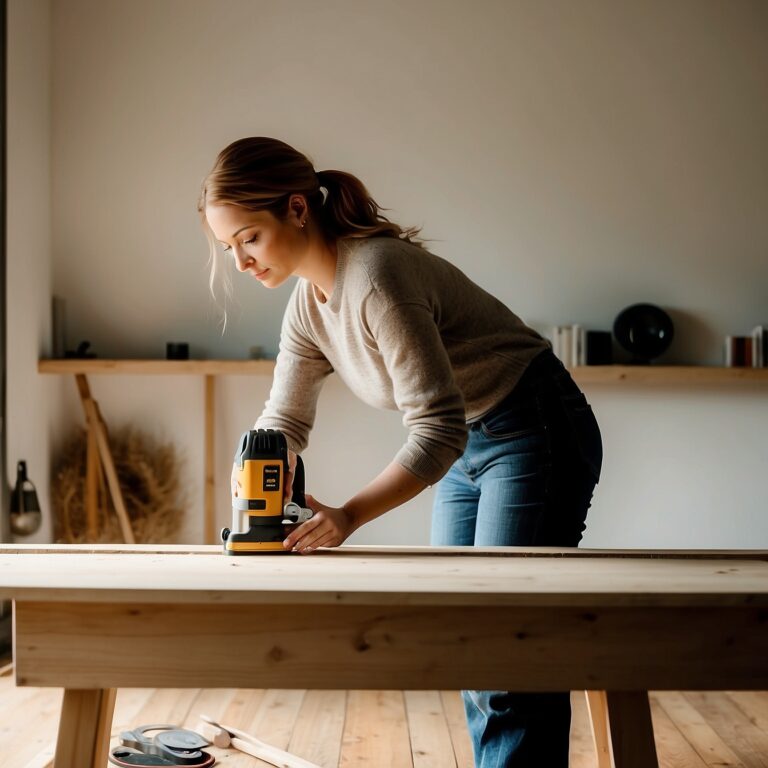

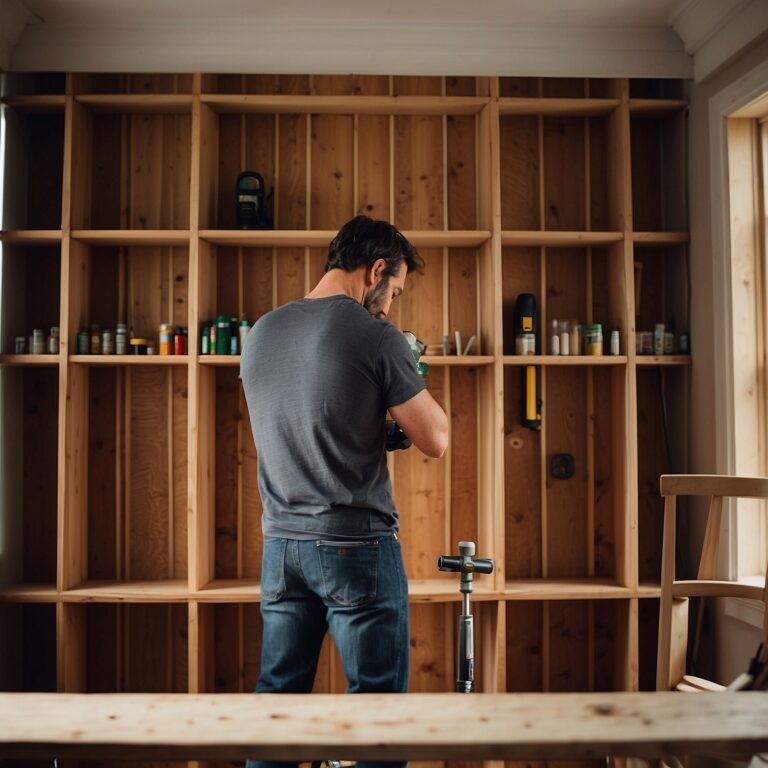
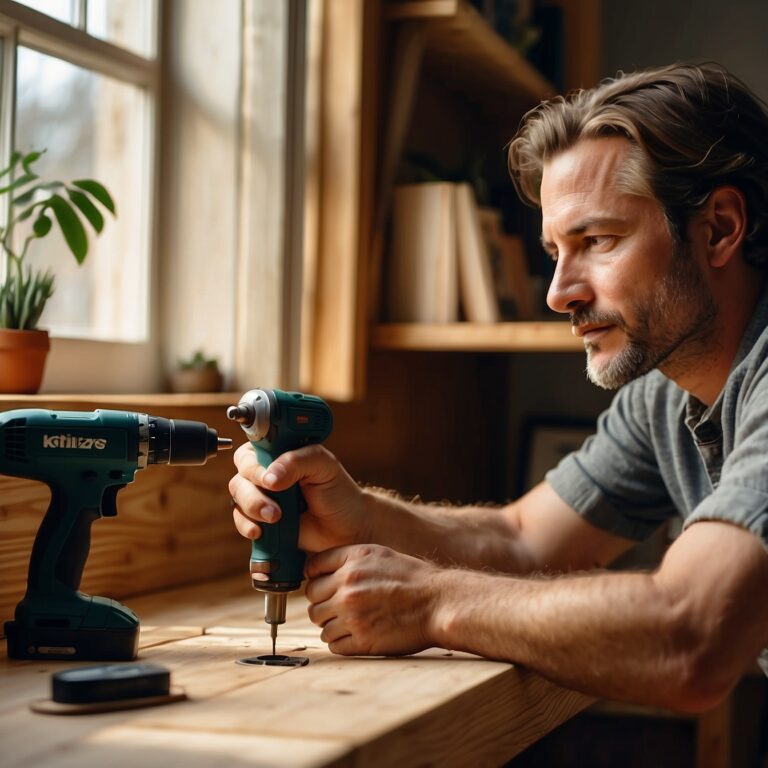

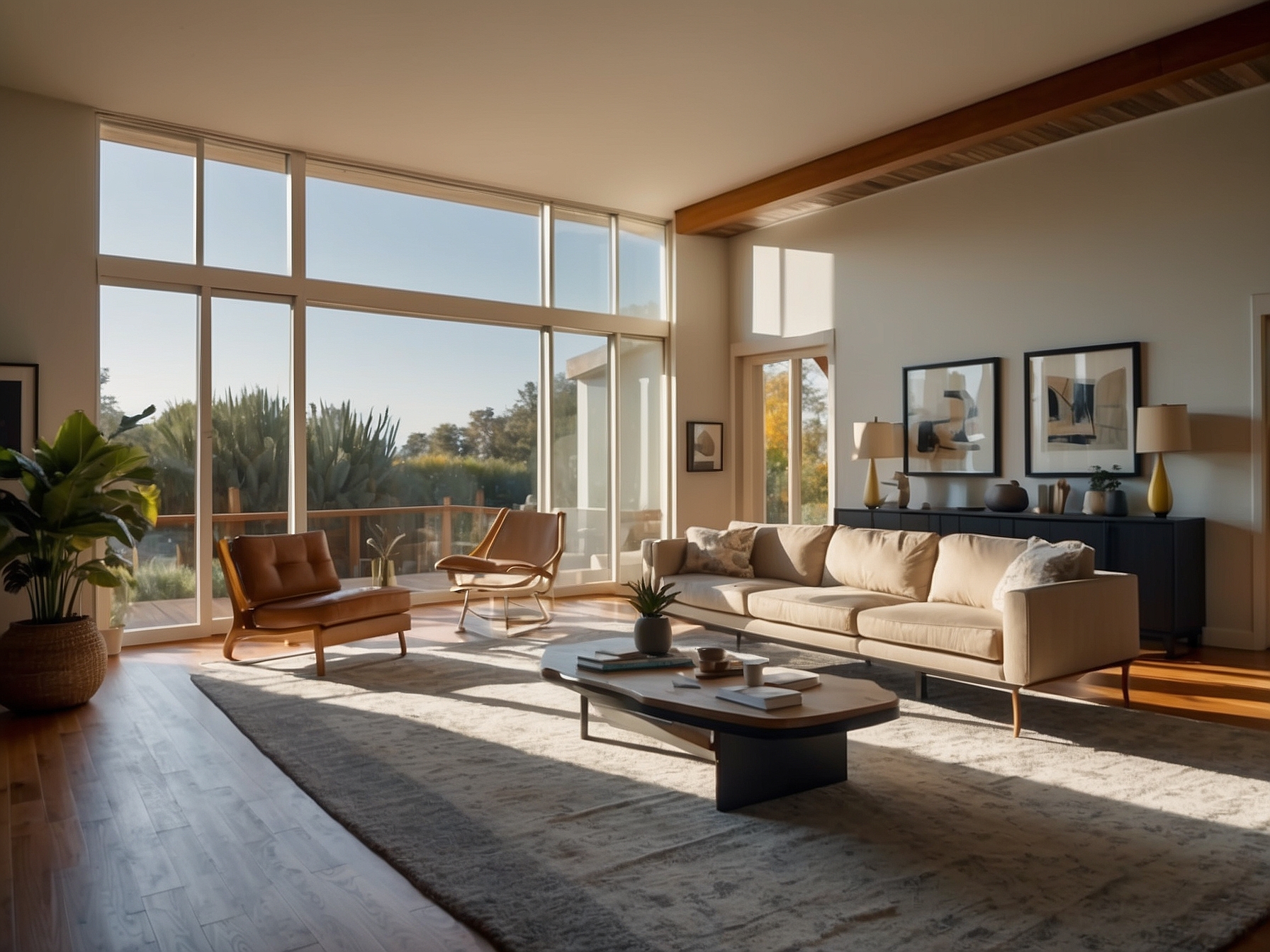

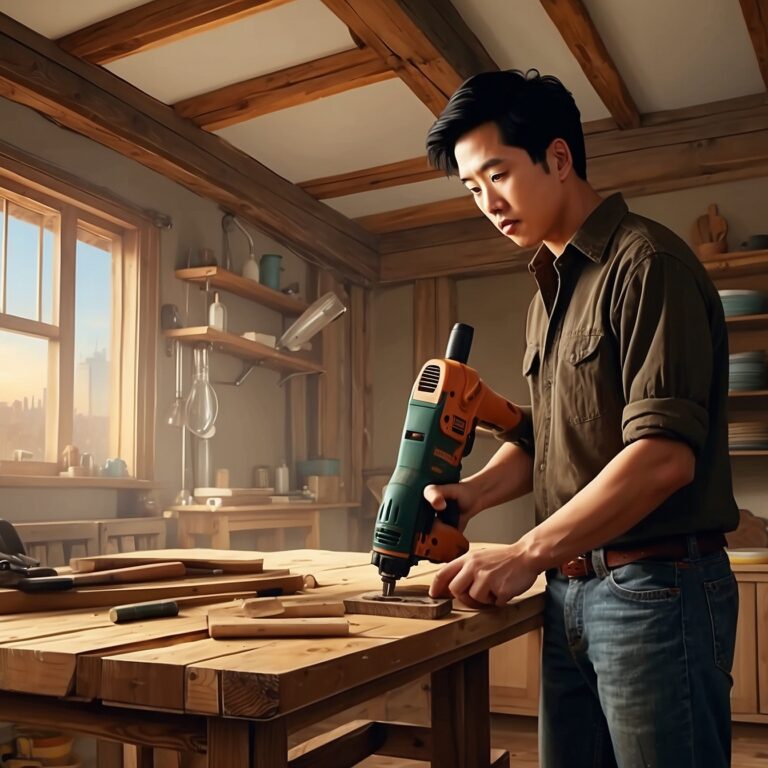
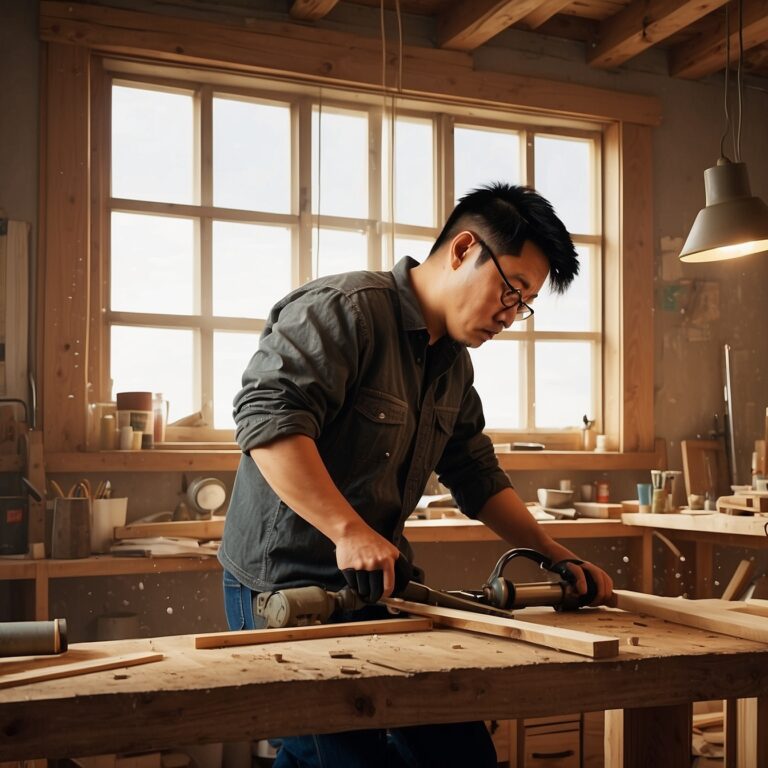


 Cart is empty
Cart is empty 











